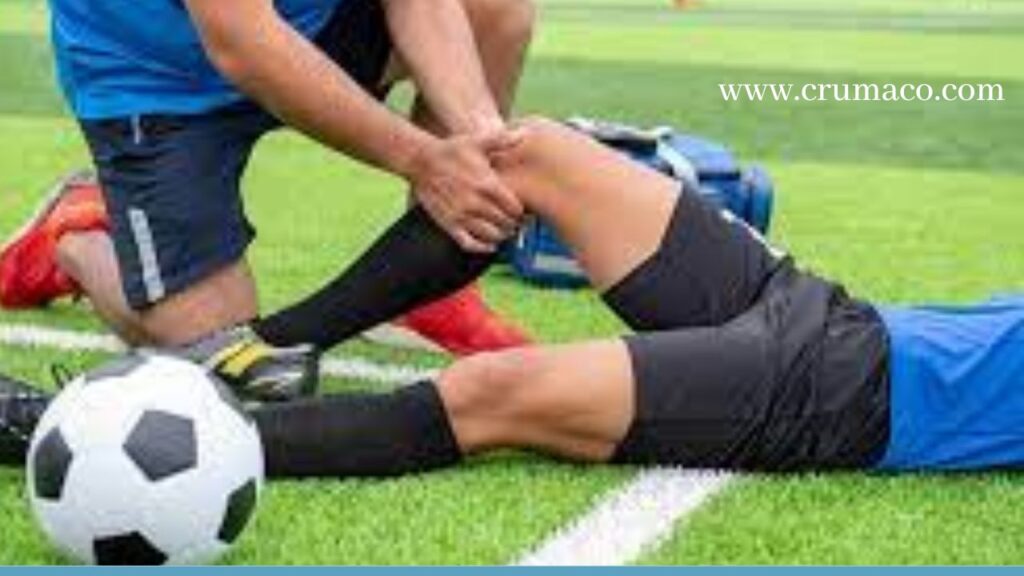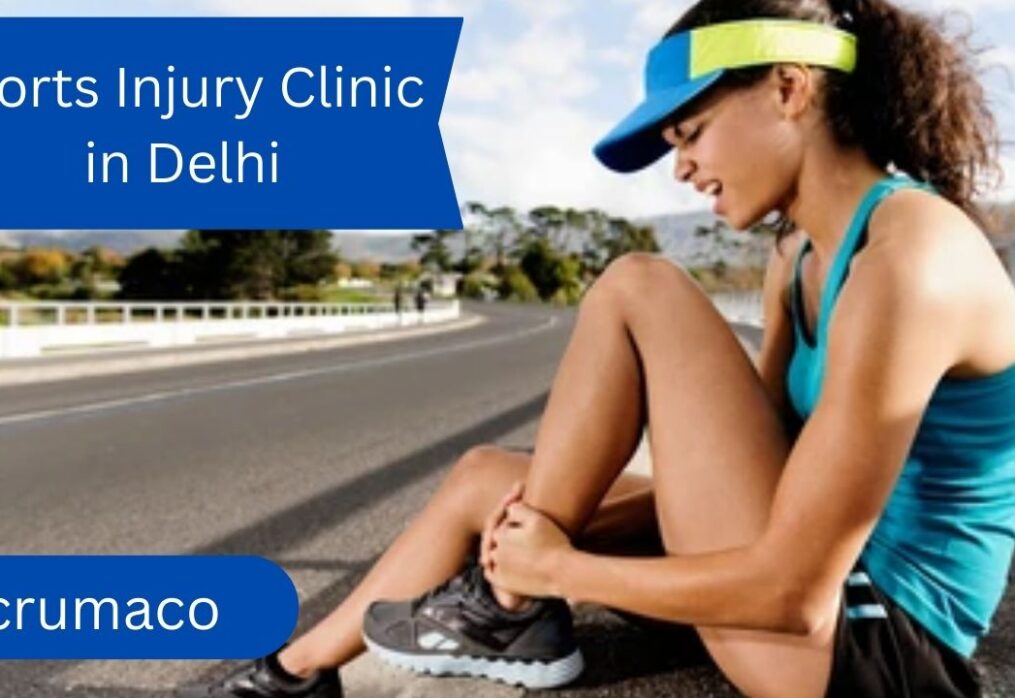Sports Injury Clinic In Delhi
Best Sports Injury Clinic in Delhi-Crumaco

Crumaco is one of the Sports Injury Clinic In Delhi, Over the past decade, Tanvir Logani has played NCAA and professional basketball while practicing Human Performance, Nutrition, and Sports Medicine. Besides being a Human Performance Specialist, he is also a Kinesiologist, Alternative Medicine Therapist, Strength Coach, Sports Medicine Therapist, and Performance Nutritionist.
Along with the above, Tanvir learned and mastered many modern and traditional techniques and modalities. The unique combination of his knowledge and experience enabled him to detect, analyze, and then masterfully treat complex health conditions. In situations where more than one trigger/root cause, often further enhanced by multiple influencing factors, is causing health conditions even modern medicine cannot pinpoint, let alone reverse.
Sports injury specialist Dr. Tanvir Logani gives considerable strengthening and flexibility exercises to ensure that the injured site returns to a fully functional state.
A Crumaco sports patient receives holistic care through a thorough evaluation, isokinetic training, psychosomatic training, and on-field physiotherapy. Contact our center for sports injury treatment in Delhi for early recognition of and treatment of injuries. It can help players and trainees evaluate performance, prevent or treat injuries, and rehabilitate and enhance powerful movements with minimal effort. Using Sports Injury Clinic, athletes can effectively treat pain and improve performance. Players and trainers can use it to evaluate performance, prevent or treat injuries, and rehabilitate and enhance powerful movements with minimal effort. Our science-based approach to behavior change helps people perform better and be more resilient by expanding their energy capacity.

What Is A Sports Injury?
In sports and other physical activities, people can get hurt. Sports injuries involve damage to part of your body caused by sports, exercise, or athletic activities. They can be acute (sudden) or chronic (develop over time).
Sports injuries can happen to anyone, particularly people who:
- Unfit.
- Wear inappropriate protective gear.
- Are exercising without warming up.
- Play contact sports that involve tackling and collisions.
- Jump, run, pivot, and change directions quickly.

What Are The Types Of Sports Injuries?
Some of the most common sports injuries are:
- Broken bone:
Broken bones (bone fractures) are caused by sudden force.
- Cartilage tear:
Several bones have cartilage covering and protecting their ends. Cartilage injuries can occur in joints such as your knees and shoulders.
- Concussion:
Concussions are caused by bumps or blow to the head.
- Dislocation:
Generally, a dislocation occurs when a bone moves out of its normal position in a joint.
- Tendinitis:
The tendons that connect muscles to bones (tendons) become swollen, inflamed, and painful. Jumper’s knee (patellar tendonitis) is an example.
- Sprains:
Ligaments connect bones and stabilize joints so that sprains can be mild or severe. They are most common in ankles, knees, and wrists.
- Strains:
Overextension of a muscle causes it to stretch or tear. Hamstring strains, back strains, and abdominal strains are examples.
Which Parts Of The Body Are Most Commonly Injured?

You can get a sports injury anywhere. They most often affect:
- Achilles tendon:
Achilles tendinitis or rupture is when the Achilles tendon becomes swollen, inflamed, stiff, and even torn. It helps you walk.
- Ankle:
An ankle is where the leg and foot meet. It contains three joints, cartilage, ligaments, muscles, and tendons. Sprains commonly cause ankle pain.
- Elbow:
As the hinge between your upper and lower arms, your elbow often experiences pain due to repetitive motions and overuse (for example, tennis elbow).
- Head:
Head injuries include concussions affecting your face, skull, and brain.
- Knee:
Located between your lower leg and thigh, your knee contains bones, cartilage, ligaments, and tendons. Jumper’s knee and runner’s knee can cause knee pain. ACL tears and meniscus tears are also common injuries.
- Shoulder:
The shoulder connects the upper arm to the trunk and contains your rotator cuff, a group of muscles and tendons that keep the arm in the shoulder socket. Rotator cuff tendinitis and rotator cuff tears are common sports injuries.
Which Sports Injuries Are Most Common?

It is important to note that injury shouldn’t deter you from participating in sports, but by knowing some of the most common sports injuries, you can take steps to prevent them or at least reduce the risk of getting hurt. Here are eight common athletic-related injuries and some ways you can avoid them.
- Strains-
During exercise or play, we use so many muscles and tendons that strains are the most common type of injury. The moving parts are all susceptible to stretching further than they should or moving in ways they should not, which leaves them torn, damaged, and in pain. Pulled hamstrings, pulled groin muscles, and strained quads are common muscle strains. Most of these strains are minor and will resolve naturally independently. Stretching and warming up before strenuous activity reduces the chances of strained muscles and tendons.
- Sprains-
There is a difference between ligaments and muscles. Ligaments connect bones. When these ligaments turn wrong, they can pull or tear. Athletes’ most common type of sprain is ankle sprains, followed by knee sprains, wrist sprains, and elbow sprains. In addition to being painful and taking longer to heal than strains, sprains often require immobilization to protect against further injury. Sprains can be prevented by stretching and warming up before workouts and practicing good technique. For example, wearing a brace while playing would be a good idea if you have a history of spraining your knee or ankle. Sprains often leave the ligament weak and vulnerable to future sprains.

- Knee injuries-
In most sports activities, the knee endures a lot of impact and wear, so we have given it its category of possible injuries. Injuries to the anterior cruciate ligament (ACL), cartilage tears, dislocations, and fractures are standard. They can be painful and debilitating. With proper padding and bracing (for example, when playing contact sports), warm-ups and stretches can reduce knee injuries.
- Fractures-
The most common fractures in impact and contact sports (arms, legs, and feet) are painful, require weeks of immobilization to heal, and sometimes need surgery. It is typical for strenuous and contacts sports to result in fractures. Still, you can reduce this risk by wearing appropriate padding, warming up, exercising to keep muscles strong and flexible, and practicing good technique. Avoid playing through the pain, as sometimes the pain is a sign of a strain or sprain that can lead to fractures if left untreated.
- Tennis elbow-
You don’t have to play tennis to get tennis elbow (golf is also a common culprit). The best way to avoid tennis elbow is to pace yourself. One of a few “injuries of repetition” occurs when the elbow ligaments are stretched. Take breaks, do other activities, and stretch before playing.

- PF/shin splints-
We’ve grouped these also as repetition injuries because they are both related to overactivity of the feet and legs, coupled with a lack of proper support. Plantar fasciitis causes sharp pain when walking. Shin splints are caused by repeated stress and high impacts of running, dodging, or quick stops and start that cause muscle inflammation in the lower leg. The two best preventative measures are proper stretching and occasional rest. Runners, joggers, and soccer and basketball players are all at risk.
- Low back pain/injuries-
In almost every sport, your back and spinal column are somewhat stressed. As a result, inflammation may occur around the vertebrae and back muscles, sometimes causing disc injuries and back pain. A sudden jarring impact can also cause acute back injuries. Treatments range from rest to physical therapy to surgery, depending on the condition. You can reduce your back pain and injury risk by exercising regularly, warming up, and eating well.
- Concussion-
Usually caused by a sudden impact on the head, concussions occur in contact sports like football. With symptoms ranging from headache and dizziness to sleepiness and temporary loss of consciousness, concussions can be mild to severe. After any blow to the head, seek medical evaluation from a spine-and-brain specialist. Sometimes more severe symptoms may develop. Symptoms of a concussion usually heal naturally in a week to several weeks with rest. Wearing protective headgear when playing contact sports like hockey or football, biking or skateboarding, etc., reduces the risk of concussion.
Get skilled treatment for back and spine injuries at Crumaco. Call +91 888886867 / +91 11 3554 6073.
Sports Injuries Treatment

Most sports injuries heal in a few days or weeks with rest and at-home strategies. For more severe injuries, treatment may include the following:
- A cast, splint, sling, walking boot, or other medical device immobilizes.
- Pain and swelling injections.
- Anti-inflammatory medications.
- Repair of ligaments, tendons, and cartilage tears.
- Rehabilitation (also called physical therapy) is to heal and strengthen injured bodies.

Sports Injuries Prevention
-
Prepare and plan according to a reasonable schedule, realistic goals, and progressive workout programs-
Exercise in the cooler hours of the morning or evening to prepare for sports, and stick to your schedule. There should be a regular, consistent, graded exercise regimen that includes flexibility training, strength training, and aerobic exercise. It should be tailored to the individual’s activity needs. The risk of harm will be reduced.

-
The Three Musketeers: Sleep, food, and water-
- Nutritious diets include protein, critical minerals such as calcium and potassium, and vitamins like vitamin D and B. Meal shots (short, frequent meals) are crucial before exercising.
- Staying hydrated is essential to your health, preventing cramps, dehydration, heat exhaustion, and heatstroke.
- Injuries are prevented by a healthy sleep pattern, which reduces fatigue build-up, provides mental and physical rest, and lengthens attention spans.
-
Wearing the right gear-
Wearing helmets, gloves, protection pads, and shin guards reduce the risk of injury. You should wear loose, breathable clothing to keep you cool and running shoes backed by gait analysis to help you reduce joint stress. Additionally, it assists in resolving several foot issues that could otherwise result in injury.
-
Technique, strength, and flexibility training-
Learning your equipment, your sport, and the proper technique is essential before you resume sports activities. A lot of injuries occur due to poor processes. It is safe to continue your workout program with a personal trainer or a professional coach before returning to sports activities and to consult with a sports medicine specialist about your strength before resuming sports activities.
Sports Injuries Statistics

Over the age of 25, the following injuries are estimated to occur:
- Bicycling – 126.5 per 100,000 individuals
- Basketball – 61.2 per 100,000 individuals
- Baseball and softball – 41.3 per 100,000 individuals
- Football – 25.2 per 100,000 individuals
- Soccer – 23.8 per 100,000 individuals
- Between 6 and 19, sports-related injuries account for about 20 percent of emergency department visits.
- Each year, 12 million people between the ages of 5 and 22 suffer a sports-related injury, which results in 20 million days lost from school3 and approximately $33 billion in health care costs.
- The number of girls diagnosed with concussions in youth basketball is almost double that of boys.
- Seventeen percent of girls were diagnosed with concussions in youth soccer compared to 12 percent of boys.
